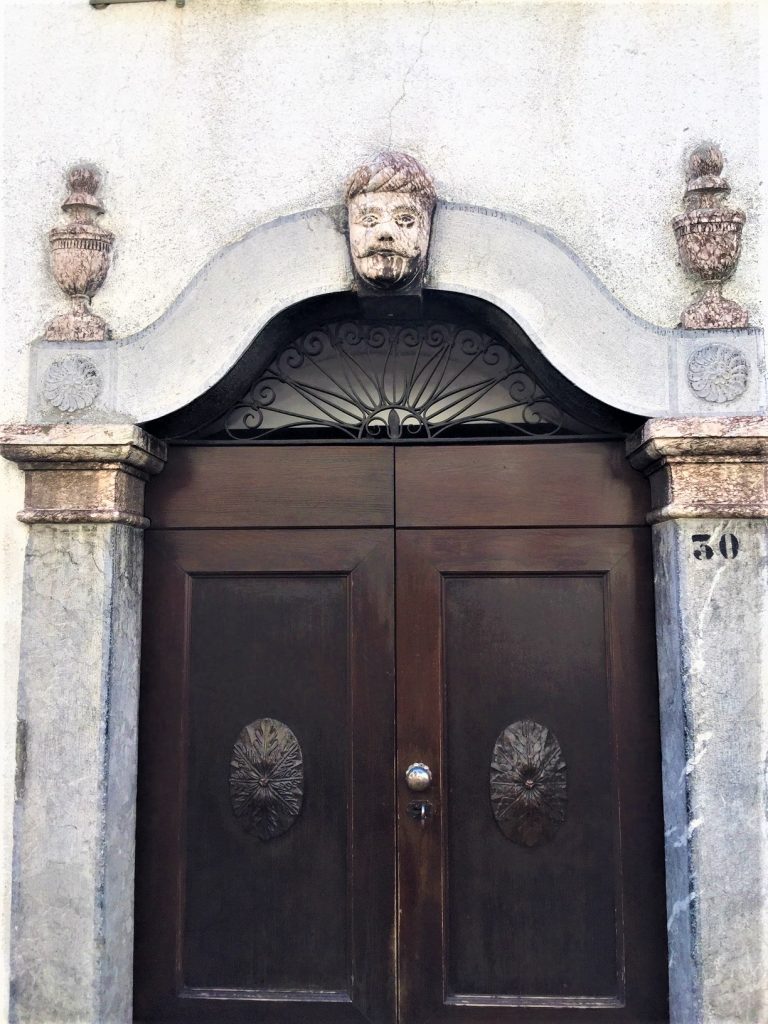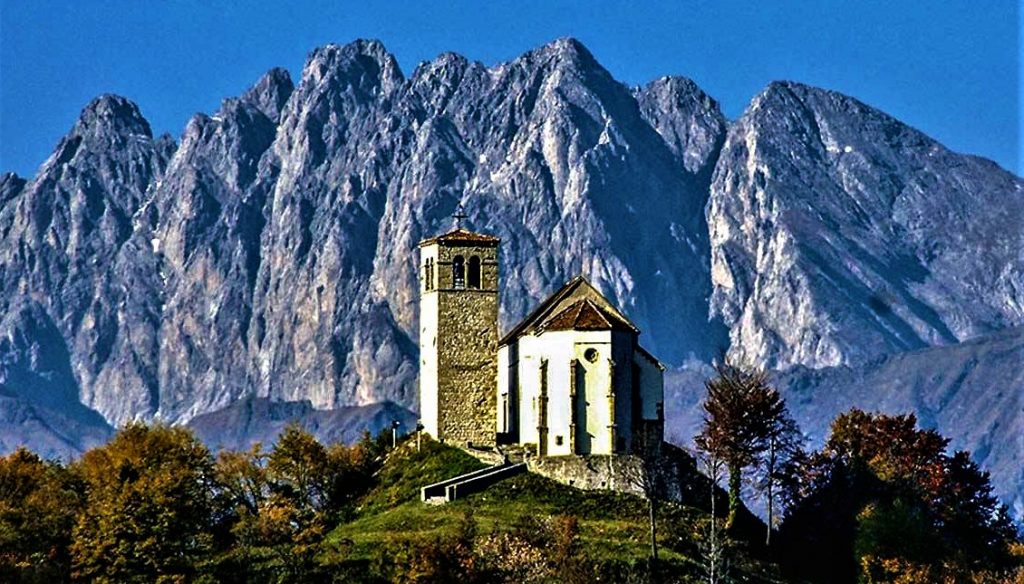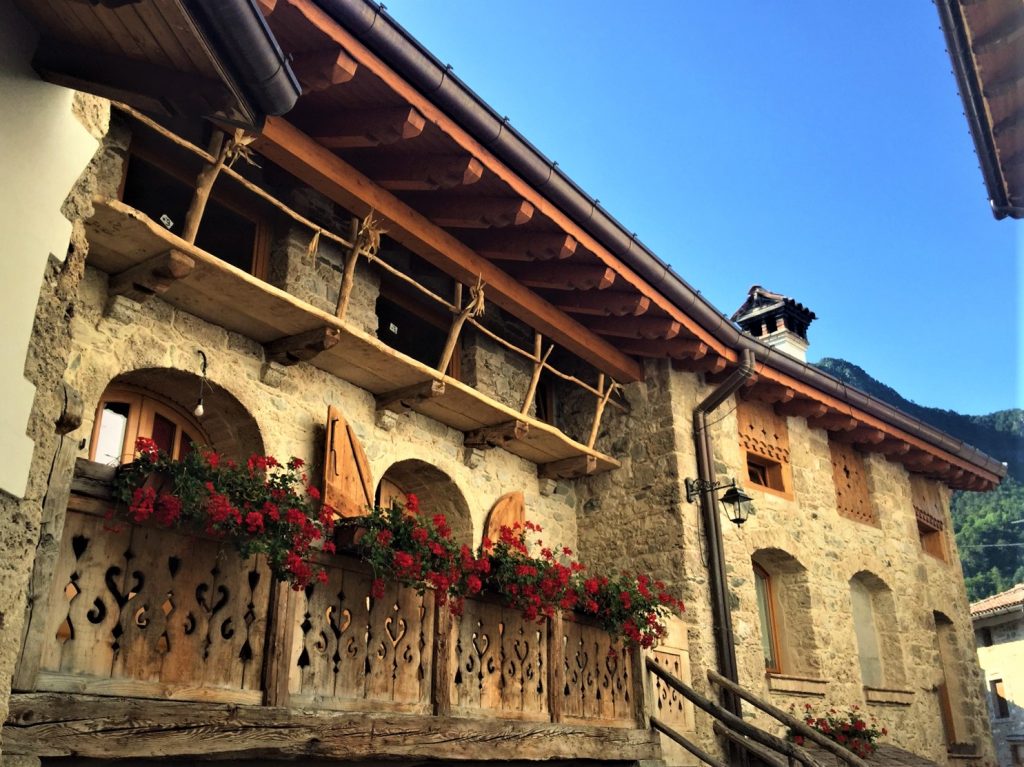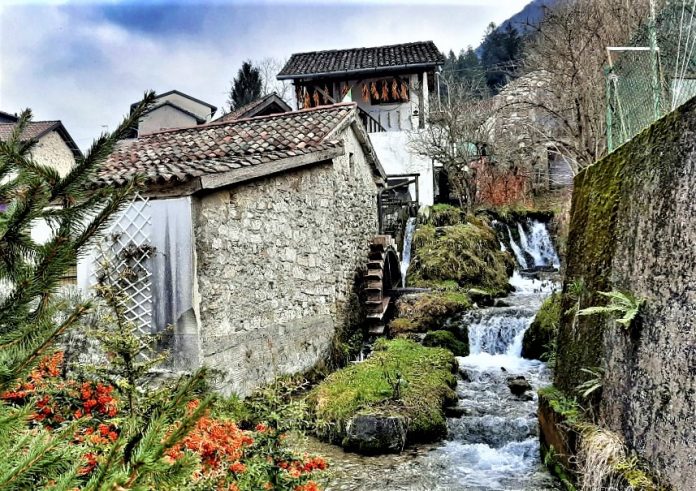by Alessandra Ressa
If you’ve never been to Illegio you should add it to your list of must-see places in Friuli Venezia Giulia. Wedged in the Prealps of Carnia not far from Tolmezzo and less than two hours from Trieste by car, it is a splendid jewel of medieval architecture which has preserved its ancient beauty and atmosphere.
Dense with history, Illegio was the impregnable and legendary fortress known as Ibligo, mentioned by historian Paolo Diacono when recording the final resistance of the Longobards, one of the northern populations to cross the Alps and settle in Northern Italy. In addition to its architectural beauty and ancient watermills, every year this tiny village hosts a well-known international art exposition that attracts tourists from around the globe.

The earliest documents to mention the settlement of Illegio (which counts approximately 350 residents today) date back to the 9th Century. After the great fire that destroyed the whole village in 1680, homes were rebuilt with the traditional inner courtyard. They were private, wall – enclosed outdoor areas surrounded by several terraced houses. Together, they formed unique housing cores that could be protected in case of external threat, like tiny medieval fortresses.

While the portion of houses facing the inner courts were used as living quarters by several families, the outer parts were exclusively employed for agricultural purposes. On the ground floor, small windows with gratings gave way to large rooms used as stables and tool deposits, while the first floor, often with its own independent wider entrance door, reached by using tall wooden ladders, preserved hay as fodder for the long winters. Access to these housing clusters was through an arched door, often kept closed. Most of these individual settlements had a main colonic house inside and were surrounded by stone walls, now gone.

Many of the buildings still display stunning doors, with fierce-looking heads, very similar to Trieste’s panduri. The door decorations in Illegio however refer to the families who occupied those homes in ancient times.

What makes this historical village so attractive is the presence of what remains of six ancient watermills built along the crystal clear waters of the stream Touf, an icy-cold spring that in the centuries has made all the difference for this unique agricultural village. Of all those mills, two have survived to be enjoyed by visitors. The Mulin dal Flanc e dal Ros dates back to 1670 and is still in use today.
For visits and opening times check the Carnia Museums website www.carniamusei.org or call +39 0433 487779.
The watermills were used to ground cereal and make flour. Another mill, Mulin dal Gjeneral, can be seen upstream along the Touf.
The best way to visit Illegio is a stroll through the old part of the village on the hilltop, and then follow the stream downhill along old pebble road to the main parking lot.

From the parking lot you can marvel at Medieval Pieve (fortified church) of San Floriano, strategically built on a rocky cliff of Mount Gjaideit at 750 meters of altitude above the valley of the river But. It is one of the oldest Pieve of Carnia, probably erected in the 9th century. From its predominant location you can see Pieve di Santa Maria and Pieve di San Pietro.
In the past, these buildings were part of a vast chain of watch towers (churches and castles) able to communicate with each other through special smoke signaling all the way to Aquileia. According to historians, the church was built on the foundation of a castle, which, in turn, was built on the remains of a paleo-Christian site from the 4th century. Archeological excavations in the area have unearthed even earlier human settlements, dating back to 176 B.C.

It takes about 30 minutes of walking along a beautiful trail to get from Illegio to Pieve of San Floriano. Once on top, you will be amazed at the view. Make sure to admire the ancient frescos inside the church. Check for opening times by calling +39 043344445.
Another feature that makes Illegio special is an international art exhibit that each year assembles well-known as well as previously unseen works by the world’s most famous artists. This year’s exhibit theme is Cambiare, change, with 30 works covering 300 years by Tintoretto, Monet, Van Dick, Picasso, Fontana and many others. Bookings at +39 0433 44445, mostra@illegio.it.
Tickets are not cheap but a complete guided tour for small groups is included, carried out by young and competent enthusiasts, that at times is more enjoyable than the works themselves.

While in Illegio, plan to have lunch or a drink at La Buteghe di Pierute, a traditional Friuli restaurant in the heart of the historical center inside one of the ancient houses. They serve typical Carnia dishes at reasonable prices.
If you don’t have time for lunch, take a look anyway at the beautiful renovated interior of this restaurant, which is a work of art itself. The owners are quite used to visitors checking the inside deco, so don’t feel embarrassed if you don’t drink or buy anything while taking your pictures. There is also a tiny supermarket inside, as it appears to be the only shop in the surroundings for food and souvenirs.






























